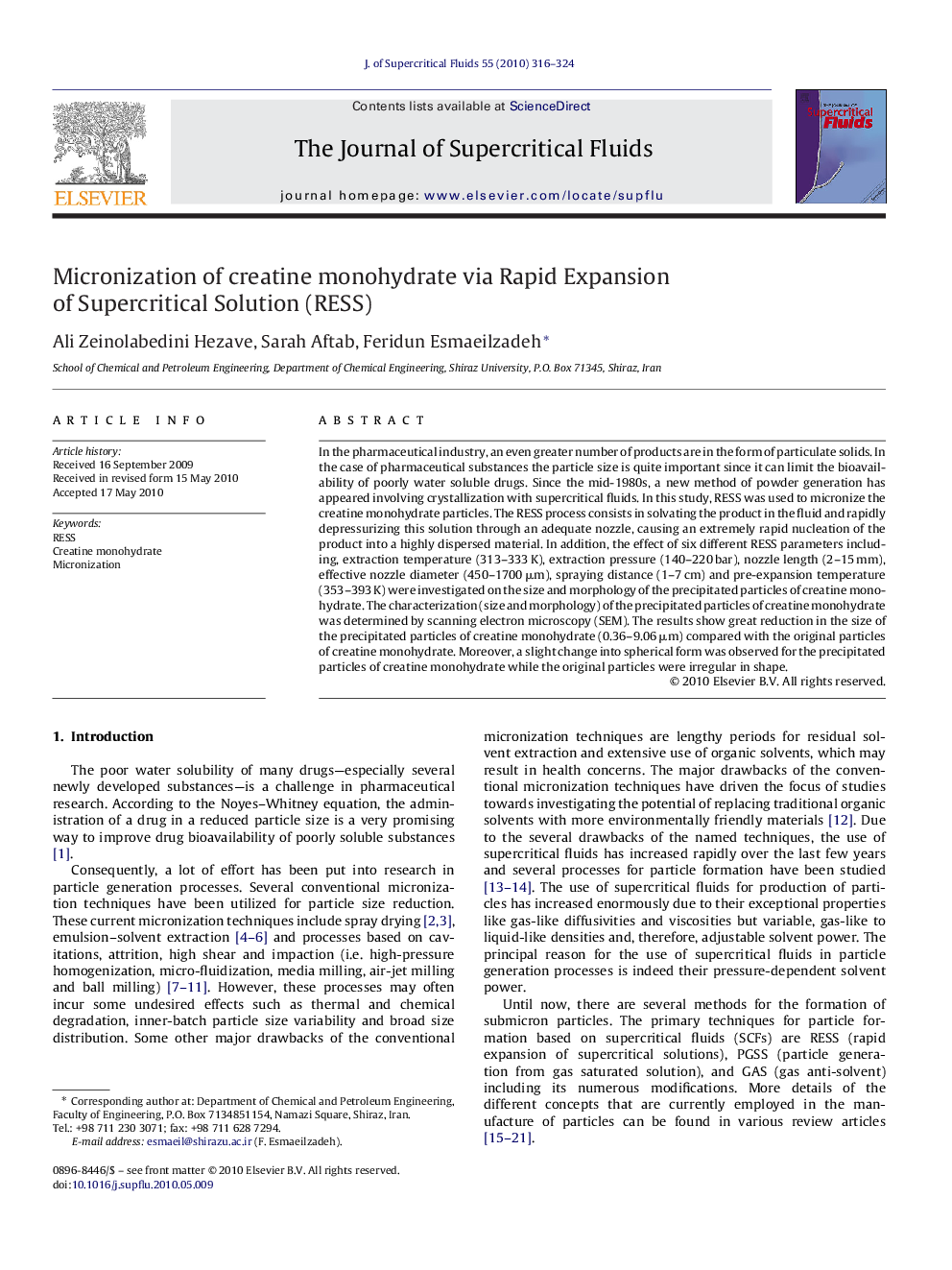| Article ID | Journal | Published Year | Pages | File Type |
|---|---|---|---|---|
| 231349 | The Journal of Supercritical Fluids | 2010 | 9 Pages |
In the pharmaceutical industry, an even greater number of products are in the form of particulate solids. In the case of pharmaceutical substances the particle size is quite important since it can limit the bioavailability of poorly water soluble drugs. Since the mid-1980s, a new method of powder generation has appeared involving crystallization with supercritical fluids. In this study, RESS was used to micronize the creatine monohydrate particles. The RESS process consists in solvating the product in the fluid and rapidly depressurizing this solution through an adequate nozzle, causing an extremely rapid nucleation of the product into a highly dispersed material. In addition, the effect of six different RESS parameters including, extraction temperature (313–333 K), extraction pressure (140–220 bar), nozzle length (2–15 mm), effective nozzle diameter (450–1700 μm), spraying distance (1–7 cm) and pre-expansion temperature (353–393 K) were investigated on the size and morphology of the precipitated particles of creatine monohydrate. The characterization (size and morphology) of the precipitated particles of creatine monohydrate was determined by scanning electron microscopy (SEM). The results show great reduction in the size of the precipitated particles of creatine monohydrate (0.36–9.06 μm) compared with the original particles of creatine monohydrate. Moreover, a slight change into spherical form was observed for the precipitated particles of creatine monohydrate while the original particles were irregular in shape.
Graphical abstractThe RESS process was used to micronize the creatine monohydrate particles. Depending upon the different experimental conditions (extraction pressure and temperature, nozzle configuration, spraying distance and pre-expansion temperature) the micron level particles of creatine monohydrate in the range of 0.36 and 9.08 μm were obtained while the mean particle size of the intact particles was about 44.67 μm.Figure optionsDownload full-size imageDownload as PowerPoint slide
